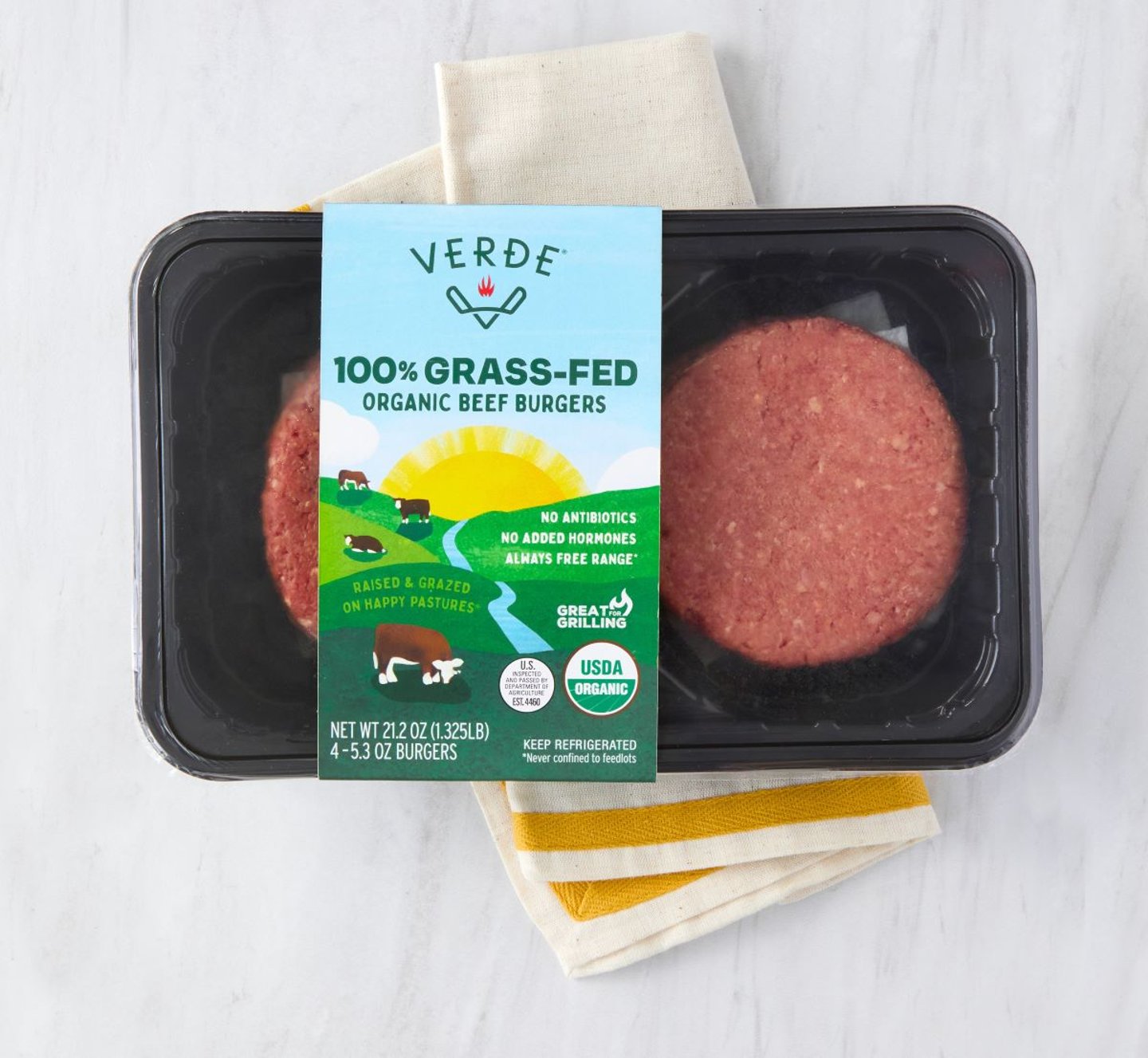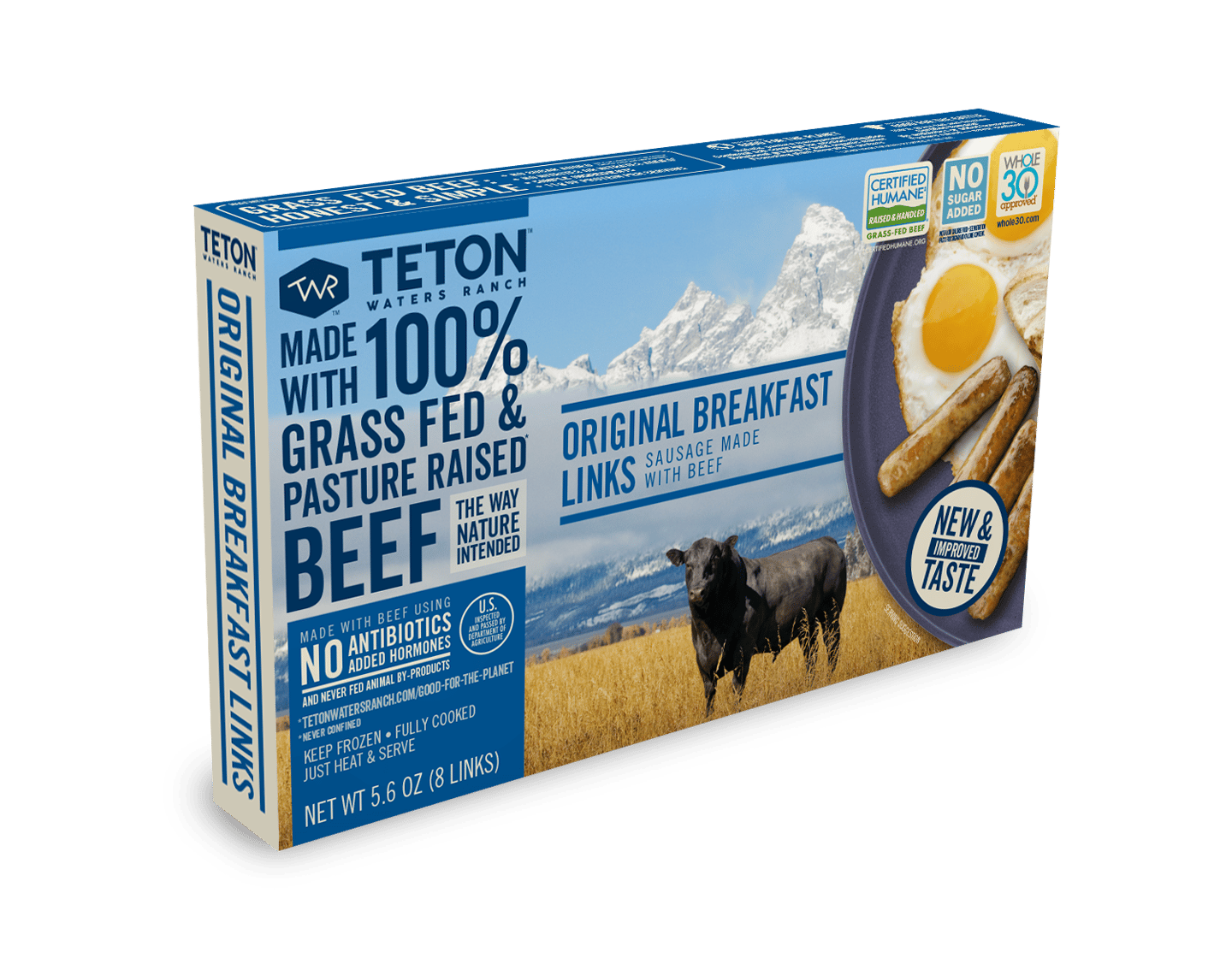A New Frontier for Beef
In 2023, U.S. meat department sales were more than $122 billion, up 3.2% over last year, according to Chicago-based consumer insights company NIQ. Grocers looking to keep up this momentum in 2024 should lean more heavily on the beef case. What was once considered an unhealthy and environmentally harmful segment is on the verge of redeeming itself to shoppers.
As a result, food retailers will want to diversify the meat case with products that feature nutritional callouts and that highlight better raising claims.
[RELATED: What's 'Hot' On the Grill?]
Nutritional Value
Beef has always been known as an excellent source of protein. Currently, with more consumers discovering the health benefits of these complex molecules, many are switching to high-protein diets. Euromonitor International’s Health and Nutrition Survey 2022 reveals that the top two reasons given for following a high-protein diet are “to improve my fitness” and that it “makes me healthier.” Popular diets such as keto — which advocates consuming higher amounts of protein over carbohydrates to aid in weight loss — are another driver of increased protein consumption. Advocates say that because eating more protein keeps blood sugar levels more stable, it keeps one fuller for longer, assisting in weight loss as it decreases the need to snack on unhealthy foods. Low-carbohydrate, high-protein diets also claim that higher muscle mass demands more energy, further aiding weight loss by creating a calorie deficit.
Trade organizations Cattlemen’s Beef Board and National Cattlemen’s Beef Association also stress beef’s nutrient-rich profile that can support heart-healthy diets when enjoyed in sensible portion sizes. On average, a 3-ounce cooked serving of lean beef has about 170 calories and is a natural source of 10 essential bioavailable nutrients, including protein, B vitamins, iron and zinc. That same 3-ounce portion will also provide about 25 grams of protein, which is 50% of the recommended daily amount.
To attract health-conscious consumers, retailers should highlight beef’s health benefits by spotlighting its leanness and high protein levels, two attributes that resonate the most with consumers.
Raising Beef Better
With the growing popularity of protein-rich diets also comes consumers’ rising concerns about sustainable beef practices. According to NIQ, shoppers are increasingly interested in knowing where their food comes from and how it was raised. In fact, the market researcher finds that responsible sourcing is one of the most important sustainability claims to 45% of consumers.
Brands and retailers are responding to this trend by investing in more sustainable solutions. They’re also making use of qualified and stated product attributes by labeling their meat products with information about their sustainability practices. This helps draw in consumers and ensures products aligning with shoppers’ demands aren’t overlooked.
“Regenerative agriculture” is the term currently generating a lot of buzz within the meat space, with customers showing a preference toward regeneratively grown meat. Regenerative agriculture approaches land management in collaboration with nature, a practice many believe is central to the food system of the future. Efforts such as FreshDirect’s 100% Grass Fed Beef Program work with family-owned farms that ensure cattle are never given antibiotics, added hormones or grain-based feed.
The grass-fed beef market is in fact projected to rise by $3.66 billion at a compound annual growth rate of 5.48% between 2023 and 2028, according to Elmhurst, Ill.-based Technavio, a global market research firm. North America was the largest grass-fed beef market by revenue in 2023. Hence, consumer demand for grass-fed beef in North America, especially the United States, should remain high during the forecast period.
Companies like Silver Fern Farms, a New Zealand-based producer of 100% grass-fed beef, has helped fuel that growth and awareness. The company launched its first Net Carbon-Zero Certified Beef products in the United States last year. Silver Fern Farms achieved Net Carbon Zero within its own farming system by insetting emissions through on-farm brush and vegetation, a process unique to New Zealand’s farm environment. Satellite mapping and AI technology have also been deployed to measure on-farm vegetation.
The USDA-approved Net Carbon Zero By Nature branded Angus ribeye, New York Strip steaks and premium ground beef are currently stocked in 75 New York City supermarkets and select stores in Los Angeles, with plans for national distribution. New Carbon Zero products from Silver Fern Farms are also expected to roll out soon.
Meanwhile, Woburn, Mass.-based Verde Farms partnered last year with big-box membership retailer BJ’s Wholesale Club and family-owned grocery retailer Schnuck Markets on the launch of refrigerated organic 100% grass-fed burger patties. The ready-to-cook raw single-ingredient patties are available at BJ’s clubs on the East Coast and in the Midwest, and also at Schnucks’ Midwest stores. The Verde Farms team anticipates a national rollout of the product this year as the brand continues to grow.
Also last year, Springdale, Ark.-based Tyson Foods revealed its own big beef news: the introduction of its Brazen Beef line. The new brand is said to be produced using 10% less greenhouse-gas (GHG) emissions. Beef under the Brazen brand is produced from cattle that are part of Tyson’s Climate-Smart Beef Program. That program was developed with input from a variety of cross-industry experts in sustainability and addresses GHG emissions on an animal-by-animal basis.
As Tyson continues to work on the science of producing a line of beef built around reductions in GHG emissions, it’s running a parallel marketing track. Describing the brand identity, Kent Harrison, VP of fresh meats marketing and premium programs at Tyson, says, “We are trying to be upbeat and different, with something that speaks definitively to that group” of younger Millennial and Gen Z consumers. Messaging will share sometimes complicated scientific information in a consumer-friendly, understandable way.
Other Trends Driving Beef
Besides nutritional callouts and raising claims, grocers should be aware of other ongoing beef trends, some of which might actually interfere with category growth. For instance, Chicago-based Midan Marketing points out that challenges in the beef supply chain are ongoing. Beef has been flat and inching toward constriction in recent months, due to drought conditions and higher feed costs. The USDA is currently estimating that the global beef supply will be down 3%, even with an increase in exports out of Brazil. With beef production falling a bit in 2024, this will likely continue to affect prices.
As beef prices once again tick up, this is a signal to retailers to focus on affordable meat staples like ground beef or private label brands.
Further, Michael Uetz, principal at Midan Marketing, notes that offering sales and promotions is ideal for getting fiscally challenged consumers to the meat case. “Last year, Midan updated its Meat Consumer Segmentation research, and from that we learned that three in 10 consumers say they only purchase meat when it is on sale,” he observes.
“Additionally, we learned that 29% of consumers say any meat product that saves them time is worth paying extra [for],” continues Uetz. This is leading to increased demand for pre-cut meats as well as the renewed growth of in-store butcher shops, where customers can have their meat cut to their specifications. Grocers can also highlight pre-marinated meats for time-strapped consumers.
Plus, offering quick and easy recipes can benefit sales. Whether creating a TikTok with a store butcher on how to braise beef chuck roast or showing creative ways to use leftovers, or providing QR codes and recipe cards at the point of sale, retailers can open up new avenues for growth and give consumers more choices for proteins that meet their budget and preferences.
Meal kits or even case-ready options are other viable sales options.
[Never miss a story – sign up for Progressive Grocer's FREE Daily newsletter]
“The demand for case-ready packaging continues to evolve,” notes Britney Banuelos, senior brand manager at Tyson Foods. “Whether shopping in-store or online, consumers are looking for freezer-ready, leakproof packaging that keeps their meat purchases fresher longer.” Banuelos adds that Tyson Foods is working to add case-ready beef products to its portfolio.
It’s Not Just for Dinner
Grocers have the opportunity to further capitalize on beef in other areas besides the perimeter. For example, over in the frozen food aisle, Teton Waters Ranch, a subsidiary of Loveland, Colo.-based GrassFed Foods, recently introduced breakfast sausages. While most breakfast sausage is made from pork, Teton Waters Ranch sausages feature 100% grass-fed beef, which GrassFed Foods CEO Jeff Tripician describes as “better for you, better for the animal and better for the planet due to being fully traceable by WholeChain and third-party verified by Certified Humane.”
Tripician explains that Teton Waters Ranch offers a skinless link, which means it’s plumper and juicier than a pork version of a breakfast sausage. The product line also boasts “a clean, short and simple ingredient statement,” and is even sugar-free, except for the maple variety, which contains sugar as a sweetener.
“We are committed to providing high-quality products at an affordable price, and our new and improved breakfast sausages are no exception,” says Tripician.
Beef doesn’t have to be confined to the major meals of the day, however. For example, over in the snacking category, Country Archer Provisions has launched a protein-packed meat stick line: Ancestral Beef Blend Meat Sticks. The meat sticks are crafted with grass-fed beef and wholesome organ meats. Available in two flavors, Original and Spicy, Country Archer Ancestral Beef Blend Meat Sticks are available now nationwide. Combining organ meats’ nourishing properties with modern snacking convenience, they provide a nutritious on-the-go option.
“At Country Archer, our aim is to produce better-for-you snacks made from only the highest-quality and nutrient-dense ingredients, featuring bold flavors and textures, often venturing into uncharted territories,” says Eugene Kang, co-founder and CEO of San Bernardino, Calif.-based Country Archer Provisions. “Considering the rise in demand for organ meats, we set out to create a delicious and nutrient-rich snack specifically for these consumers. Packed with beef liver and heart, low in sugar, and abundant in protein, this meat stick offers a protein-packed punch.”









